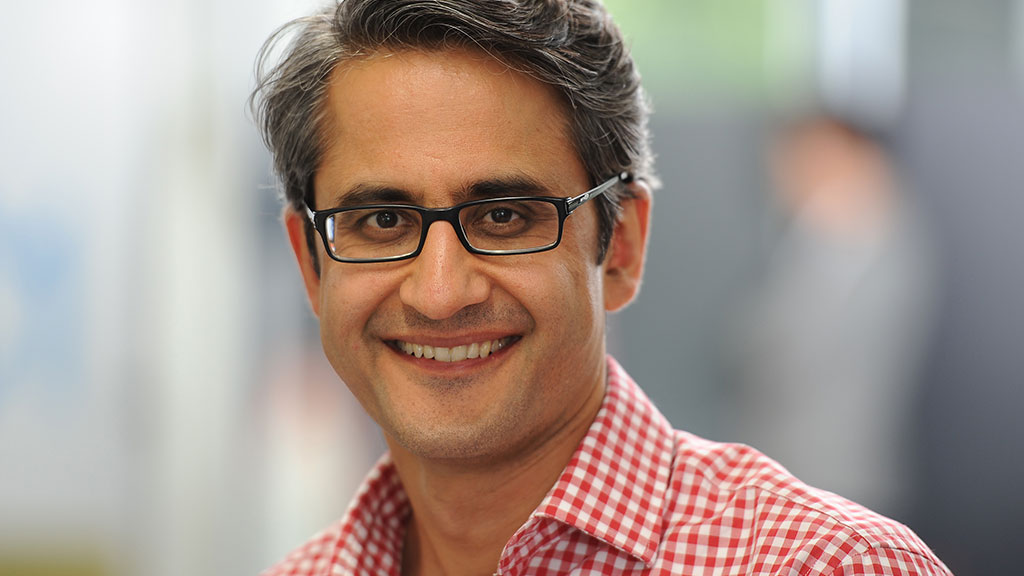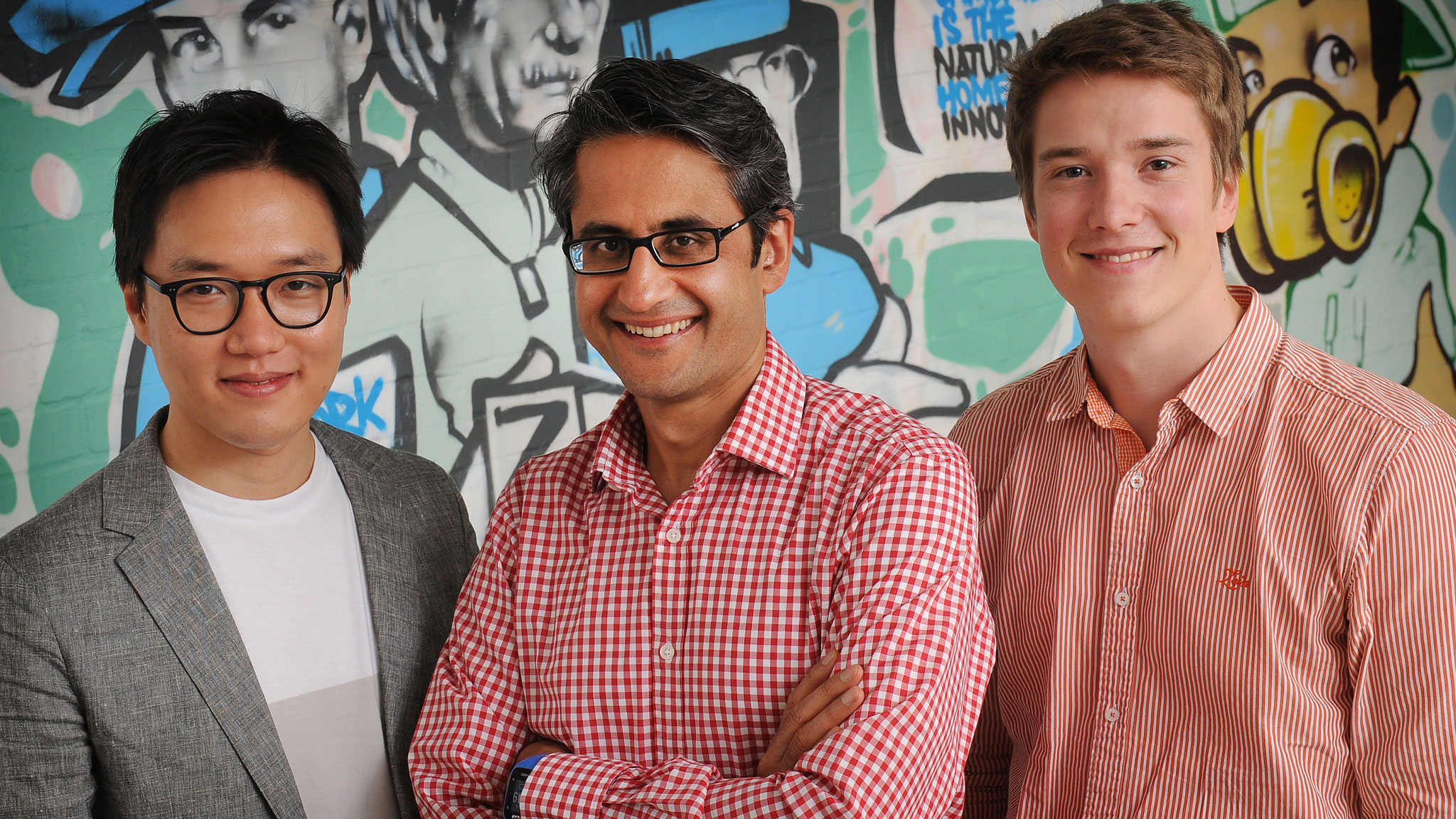On the Prowl for Smarter AI
Wed, 07/05/2017 - 12:00
PROWLER.io is developing next-generation machine learning algorithms for more powerful AI.
You’re late for work; you struggle with your phone’s mapping app with one hand while trying to sling your bag over your shoulder with the other. You hit the route determined to be the fastest, even though it involves a nasty bit of traffic up ahead. But when you get to the supposedly congested spot, you find that the road is clear—the app was wrong.
This may bode well for your commute, but for Mr Vishal Chatrath, CEO and co-founder of PROWLER.io, it’s an unacceptable failure on the part of the artificial intelligence (AI) meant to help you. His company is building solutions to make sure that situations like this don’t arise.

Mr Vishal Chatrath, CEO and co-founder of PROWLER.io
Rethinking AI
Historical, ancient and dead: that is how Mr Chatrath describes traditional AI approaches.
Developers commonly train machine learning algorithms by feeding them vast numbers of data points—an approach that follows a decision tree mechanism. Giving an algorithm millions of pictures of dogs and cats, for example, can teach it to recognise the difference between the two animals.
The burgeoning AI industry is still focused on perception problems—recognising images and understanding speech, for example,” says Mr Chatrath. “But far greater benefits will come from AI’s ability to make good decisions based on that perceived information.
But since decision trees cannot handle environmental change, this approach takes a black-and-white view of reality, limits the possible number of outcomes and cannot handle complex situations, says Mr Chatrath, an engineer by training who has worked at Nokia, salary comparison company MySalaryWiki, and VocalIQ, which was acquired by Apple to develop its voice interface technology.
PROWLER.io—the Cambridge, UK startup founded by Mr Chatrath, Dr Dongho Kim and Mr Aleksi Tukiainen in January 2016—seeks to break through this limitation by using a different starting premise.
By 2025, principled decision-making using autonomous AI agents will drive the world economy, predicts Mr Chatrath.
Instead of basing its knowledge on data points—“historical data”, as Mr Chatrath refers to them—PROWLER.io’s algorithms use mathematical probabilities to determine the most likely state of affairs. They also incorporate real-time data feeds—from closed-circuit cameras, for example—to help account for uncertainty. This has allowed PROWLER.io to develop autonomous decision-making systems that learn from experience, automatically adapting to changing environments by refining their strategies in data-driven ways, says Mr Chatrath.
When it comes to your morning commute, for example, the idea is that these systems will be able to predict the state of traffic and act accordingly, instead of simply trying to gather traffic information more quickly.
By 2025, principled decision-making using autonomous AI agents will drive the world economy, predicts Mr Chatrath.
The power of probability
The probability theory that underlies PROWLER.io has existed for hundreds of years. Bayes’ theorem, developed by the eponymous Thomas Bayes, an 18th-century English statistician and philosopher, holds that some prior knowledge of conditions related to an event can be used to make predictions about how future conditions would affect the event.
For example, several instances of vehicle traffic slowing down when it rains can be used to make a probability-based prediction: if it is raining, there is a higher probability of a slowdown in vehicle traffic.
To cope with this and to build models flexible enough to generalise to novel situations, we use reinforcement learning algorithms that can help estimate, account for and even reduce uncertainty by favouring decisions that loop fresh information back into the models
When supplied with these premises, AI algorithms can draw sound conclusions from fewer instances, instead of having to crunch millions of data points. This means less of a lag for users.
Because these predictions are based on finite (and typically small) amounts of data, they will contain a degree of uncertainty, says Mr Chatrath.
To cope with this and to build models flexible enough to generalise to novel situations, we use reinforcement learning algorithms that can help estimate, account for and even reduce uncertainty by favouring decisions that loop fresh information back into the models, he explains.
While its technology has many applications, PROWLER.io’s initial plan is actually to target game developers. In massively multiplayer online (MMO) games such as World of Warcraft, for example, its next-generation machine learning algorithms can be used to make characters and other game elements more natural and responsive.
Developers use swarm theory, which takes advantage of emergent properties, to make game elements more realistic and intelligent, says Mr Chatrath. One flying bird, for example, isn’t that remarkable, but hundreds of them can invoke awe and fear. PROWLER.io’s algorithms can add personality to independent members of the swarm, making for less predictable, more interesting gameplay, he explains.
Simulations for smart cities
PROWLER.io is also branching out beyond game development. In September 2016, the company secured close to two million US dollars from Cambridge-headquartered Amadeus Capital Partners, London-based Passion Capital and Singapore-based SGInnovate.
One of the reasons for SGInnovate to invest in us is the value we can add to smart city simulations,” says Mr Chatrath. “They are also helping us by introducing us to key players in that space in Singapore and the Asia Pacific region.
PROWLER.io’s algorithms, Mr Chatrath points out, can be scaled to simulate the 24/7 workings of a city, thus allowing various urban planning solutions and scenarios to be modelled.
Simulations could, for example, be used to predict the impact of flooding, and hence guide the development of pre-emptive strategies—building drainage infrastructure at appropriate locations, for instance—to mitigate it. Even more detailed simulations could be accomplished if real-time sensor data is incorporated. Air quality data, for example, could be used to simulate urban pollution, and help guide strategies to reduce it.

Working with SGInnovate gives us a unique opportunity to tap into the Singapore ecosystem, says Mr Chatrath
Now that PROWLER.io is over a year old, Mr Chatrath’s goals are to land top-level talent and to scale the company’s research into a product, he says. With numerous applications in areas such as autonomous vehicles, robot navigation and financial technology, the probability of such products being in demand looks set to be high.
We believe that Singapore will be the first place where the concept of a true smart city will be realised—where with the help of sophisticated, predictive platforms that make use of autonomous AI agents, decision-making will not be reactive, but pro-active instead.
Trending Posts
- Mapping Singapore’s early-stage emerging technology startups
- How GDMC’s Brian Liau is fostering tomorrow’s gene therapy talent through a biotech mentorship programme
- The uphill journey of building a startup: Fabrica AI’s founders share key lessons
- Steps to build an impactful career in science according to these Nobel Prize winners
- Transforming antimicrobial disinfectant solutions while combating food waste






